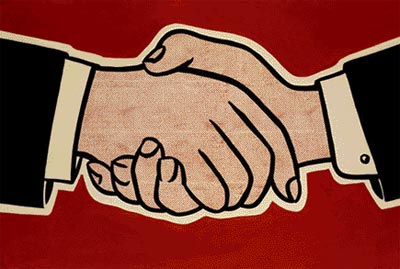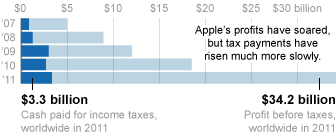within the world
And Madame. Twenty past eleven.

{ Who do we have here? This is Eddie. We’re just cruising. He’s a dude magnet. My office is on Wall Street, and if I’m with Eddie, guys just surround me. They say, “Oh my God, I used to have one of these when I was living in the country!” Or whatever. I doubt that short dress hurts. I don’t know. No one talks to me unless I’m with the dog. | NY mag | Continue reading }
Coming out with a whopper now. Rhapsodies about damn all.
One of the nightmare scenarios for modern society is the possibility of a global flu pandemic like the 1918 Spanish influenza which infected about a quarter of the global population and killed as many as 130 million of them.
An important question for policy makers is how best to limit the spread of such a disease if a new outbreak were to occur. (The Spanish flu was caused by the H1N1 flu virus that was also responsible for the 2009 swine flu outbreak.)
One obvious idea is to close international airports to prevent, or at least dramatically reduce, the movement of potentially infected individuals between countries. But is this the best approach?
Today, Jose Marcelino and Marcus Kaiser at Newcastle University in the UK, provide an answer. They say a better approach is to cut specific flights between airports because it can achieve the same reduction in the spread of the disease with far less drastic action.
With manners transposed the teatray down to an upturned lithia crate, safe from eyes, low
A study of the world’s largest subway networks has revealed that they are remarkably mathematically similar.
The layouts seem to converge over time to a similar structure regardless of where or over how long they were built.
The study, in the Journal of the Royal Society Interface, analysed 14 subway networks around the world.
It found common distributions of stations within the networks, as well as common proportions of the numbers of lines, stations, and total distances.
Some scientists think that subway networks are an emergent phenomenon of large cities; each network is the product of hundreds of rational but uncoordinated decisions that take place over many years. And whereas small cities rarely have subway networks, 25 percent of medium-sized cities (with populations between one million and two million) do have them. And all the world’s megacities—those with populations of 10 million or more—have subway systems.
You keep your work station so clean, Jerome
Eduardo Saverin, the billionaire co-founder of Facebook, renounced his U.S. citizenship before an initial public offering that values the social network at as much as $96 billion, a move that may reduce his tax bill.
related { The strange vogue in dumping U.S. citizenship }
Which dangled at every movement of his portentous frame

New York City agency pushes plan to prevent cyberattacks on elevators, boilers
What would happen if an attacker broke into the network for the industrial control systems for New York City’s elevators and boiler systems and decided to disrupt them?
“You could increase the speed of how elevators go up or down,” says Steve Ramirez, business analyst, analysis and communications in the Office of the CIO of the New York City Housing Authority (NYCHA), which provides public housing for low- to moderate-income families in the five boroughs of the city. And if attackers ever successfully penetrated the network-based industrial control systems (ICS) for the boilers, they could raise the heat levels for municipal boilers, causing them to explode.
photo { Bill Sullivan }
Very good. Where?
We’ve been told by the New York Times, you know, the newswpaper of record, that Apple only paid a 9.8% tax rate last year.
As it stands, the company paid cash taxes of $3.3 billion around the world on its reported profits of $34.2 billion last year, a tax rate of 9.8 percent.
This really is the most gargantuan ignorance on their part. The $3.3 billion has nothing, nothing at all, to do with the $34.2 billion: something which any accountant at all could have told them.
related { For every $1 Google spends lobbying, Apple spends 10¢ }
‘It is not the worst things that cause the worst shame.’ –Nietzsche

The fear of being laughed at (gelotophobia) was examined in its relations to concepts from positive psychology in Austria, China, and Switzerland.
It was related to satisfaction with life and Peterson et al.’s (2005) three orientations to happiness; the life of pleasure (hedonism), life of engagement (related to flow-experiences), and life of meaning (eudaimonia).
Participants (N = 744) completed self-report measures of gelotophobia, satisfaction with life, and orientations to happiness. The results revealed that gelotophobia could be found in all three countries.
The participants exceeded cut-off points indicating gelotophobia in Austria (5.80%), China (7.31%), and Switzerland (7.23%). The fear of being laughed at was negatively related to life-satisfaction in all three countries.
Gelotophobes described themselves with lower overall estimations of their lives.
{ The International Journal for Humor Research | Continue reading }
Surveillance states are the Soviet Union, and the former East Germany

{ US Drone fleet can keep tabs on the movements of Americans, far from the battlefields. And it can hold data on them for 90 days — studying it to see if the people it accidentally spied upon are actually legitimate targets of domestic surveillance. | Wired | full story }
The body without organs

On December 25, 2011, however, headlines were ablaze with the news: China and Japan had reached an agreement to use their own currencies in trade and financial transactions. Their governments would establish a market for direct exchange of yuan and yen, avoiding the convoluted process in which a bank or firm in one country must first sell its national currency for dollars and then use them to buy the currency of the other. As part of the same agreement, Japan’s central bank agreed to hold more of its foreign currency reserves, most of which are in dollars, in yuan instead. (…)
A first thing to say is that the dollar, like the United States, isn’t going anywhere. The United States still accounts for nearly a quarter of global GDP when the output of other countries is valued at market exchange rates (which is the appropriate metric when one is concerned with international transactions). By this measure, the United States is still nearly three times the economic size of both China and Japan. Its financial markets are deep and liquid. The market in U.S. Treasury bonds—the principal instrument that foreign central banks hold as reserves—is the single largest financial market in the world. The fact that there exists a huge volume of currency transactions involving dollars allows investors to buy them in substantial quantities without driving up their price and to sell them without driving that price down. In the competition with other currencies, in other words, the dollar enjoys the advantages of incumbency.
photo { Brian Finke }
But look! The bright stars fade.
The New York Times dropped another bomb on Apple’s “iEconomy” this weekend with an expose that shows how the world’s biggest corporation evades billions of dollars in taxes by creating subsidiaries in low-tax states and countries like Nevada, Ireland, the Netherlands, Luxembourg, and the British Virgin Islands. (…)
According to the Center for Responsive Politics, Apple spent $2.3 million on lobbying last year and its lobbying expenditures have been steadily increasing over the past decade – in 2000, it only spent $360,000 on lobbying.
A big chunk of this is spent lobbying specifically on tax policy, especially repatriation legislation, which lets firms bring profits held overseas back to the United States at a cheaper tax rate. One bill in particular, the Freedom to Invest Act of 2011, would save companies like Apple, Google, and Cisco $78.7 billion, paid for by the American people.
The curse of my curses, seven days every day

Efforts to “recruit” subjects were often illegal, even though actual use of LSD was legal in the United States until October 6, 1966. In Operation Midnight Climax, the CIA set up several brothels in San Francisco, California to obtain a selection of men who would be too embarrassed to talk about the events. The men were dosed with LSD, the brothels were equipped with two-way mirrors, and the sessions were filmed for later viewing and study.
Some subjects’ participation was consensual, and in these cases they appeared to be singled out for even more extreme experiments. In one case, volunteers were given LSD for 77 consecutive days.
‘I hope that sweat is as nourishing as it is tasty, because it’s all you are ever going to get from your dealings with me.’ –Evan Calder Williams

Why do Japanese investors keep buying their own public sector debt, which is racing to 250% of GDP by 2015, twice the level that got Greece in trouble?
{ JP Morgan’s global asset allocation team/FT | Continue reading }
photo { Jim Goldberg }
Said you had to leave to start your life over
Internet users in Iran will be permanently denied access to the World Wide Web and cut off from popular social networking sites and email services, as the government has announced its plans to establish a national Intranet within five months.
related { Why Iran Didn’t Admit Stuxnet Was an Attack }
‘Did you hear that?’ –What people say after extremely loud thunder

{ Glithero, still from Burn Burn Burn Glithero, 2007. Video featuring wood and flammable paint. | Dust, Ashes, and Dirt in Contemporary Art and Design, at Museum of Arts and Design, NYC, through Aug. 12 }
Energy and motion made visible — memories arrested in space.

For decades in art circles it was either a rumor or a joke, but now it is confirmed as a fact. The Central Intelligence Agency used American modern art - including the works of such artists as Jackson Pollock, Robert Motherwell, Willem de Kooning and Mark Rothko - as a weapon in the Cold War. In the manner of a Renaissance prince - except that it acted secretly - the CIA fostered and promoted American Abstract Expressionist painting around the world for more than 20 years. (…)
Why did the CIA support them? Because in the propaganda war with the Soviet Union, this new artistic movement could be held up as proof of the creativity, the intellectual freedom, and the cultural power of the US. Russian art, strapped into the communist ideological straitjacket, could not compete.
If I played guitar I’d be Jimmy Page

{ Jay-Z, Ed Ruscha and Marilyn Minter to Design Water Tanks in New York }
previously in let’s deface new york { Jeff Koons is in talks with Friends of the High Line }
You only live once, and most people don’t even do that
You never forget your first taste of sperm. In Japanese, the word is shirako, which translates as “white children” or “albino.” You might also hear it described as, a bit more appetizingly, white pillows or fluffy clouds. To be honest, if it weren’t for the steady stream of sake and peer pressure from people we understand to be our friends, we probably would not have ordered the cod sperm sacs (tara shirako ponzu) from the specials menu at Hanako on a recent night.
{ BK | Continue reading | Thanks Tim }










